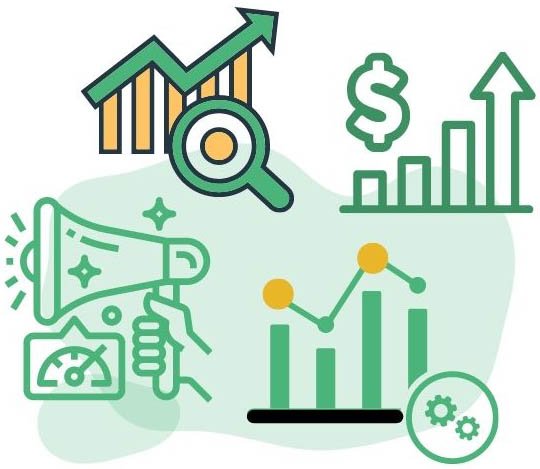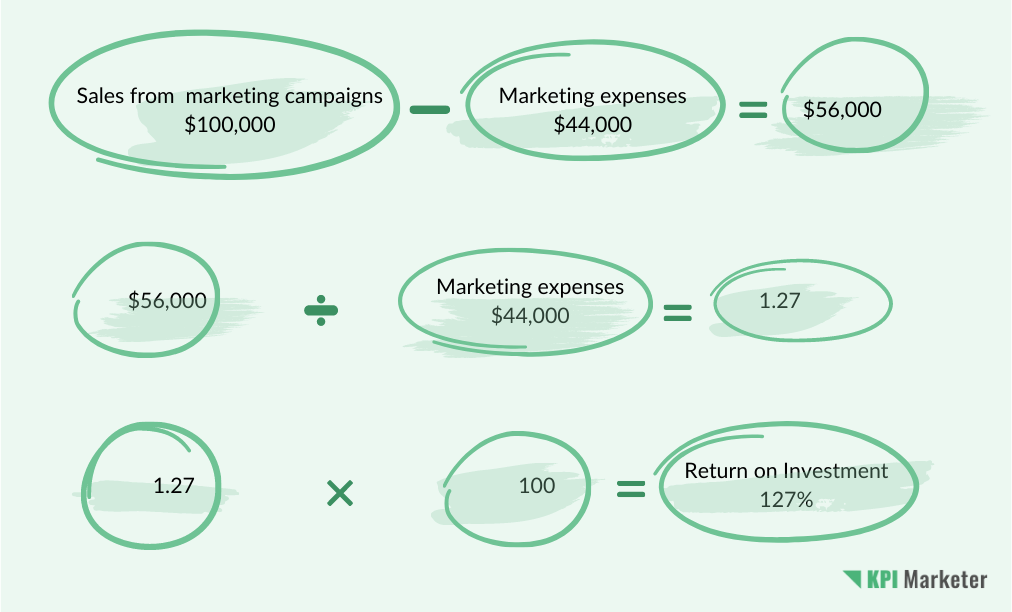Marketing KPIs Keep Your Plan on Track and Budget
Results matter in business, and your marketing efforts are no exception. To measure success, there are many (and many more) Marketing Key Performance Indicators (KPIs) you can use. Each has value, and some may be more important to your business than others. Below we’ll examine a few key metrics you may want to consider.


Why Do I Need to Worry About Marketing KPIs?
There are lots of reasons you should pay attention to your business’s marketing performance. First, you’re probably spending money on it, even if indirectly. Like anything else in life, you are going to want to know if you are getting what you paid for.
Sometimes the answer to that question is simple. If your marketing budget is, say, ten thousand dollars and you bring in one hundred thousand dollars in new customer sales, you might decide your marketing spend is worthwhile.
The Line Between Marketing and Sales has Become Blurred
With the advent of digital marketing, the line between traditional sales and marketing has become blurred. It wasn’t long ago that a marketing department wasn’t directly responsible for sales volume. In many cases that has changed. So, how do you make sense of it all?
By evaluating your marketing KPIs of course.

Examples of Marketing Categories
From a high-level viewpoint, your marketing efforts can be classified in a few different ways. These can include:
Marketing KPIs for Your Small Business
As mentioned, there is a nearly endless list of marketing KPIs you can consider. Here are some that can help you begin to understand the success of your marketing strategy:
KPIs to Help You Understand Your Return on Investment
Customer Lifetime Value (CLV)
Before you start setting strategic marketing goals and, importantly, allocate a budget, you should have a clear understanding of what your customers are worth to your business. It’s likely you are interested in repeat customers, so don’t calculate CLV by just looking at your average ticket. Instead, think about what an average customer will spend over time. You might choose a timeframe of “lifetime” or a period of, say, five years.
Return on Ad Spend (ROAS)
Most successful businesses spend money on advertising. This can include local radio ads, Facebook, Google Ads, and many other platforms. You need to know what those ads buy you.
This can get a little tricky. It is easy to say, “My ROAS is the difference between how much I spend advertising and how much I sold.” Lots of times that will be true. But, what if your goal is to increase your site traffic? You might use a social media ad to share content on your site. This can help you meet your goal, and, ultimately, increase your customer base, but it can be hard to quantify in terms of spend.
However, there are benchmarks to help you understand ROAS regardless of your campaign type. Talk to us about them!
Return on Investment (ROI)
You know this KPI. Understanding your marketing return on investment is critical to your long-term success. In simple terms, subtract your marketing spend from your sales growth, divide that by marketing spend, and multiply that by 100. Here’s a visualization that may help:

Marketing KPIs to Help You Understand Your Website Growth
Website Traffic
You both want and need people to visit your website, spend time with your content, and ultimately become customers. A good way to monitor the effectiveness of your marketing plan is by keeping up with how many visitors your site has. This is a key performance indicator for growth.
A good way to do this is with Google Analytics, which is free and pretty painless to set up. If you’re a marketer, you are checking analytics regularly. If you are a business owner or stakeholder you may want to see reports once a month or quarterly.
Your website traffic should increase over time. Don’t panic if you have an off week or month. Instead, look for stable, consistent increases in users and sessions.
Organic Traffic
Many businesses deploy paid marketing campaigns meant to drive site traffic. While this is a useful strategy, long-term success depends on organic traffic, making it an important marketing KPI for your business.
Organic traffic consists of people who come to your site via search engines. This happens when they type in keywords found in your content. Over time and as your site matures and content grows, so should your organic traffic.
Referral Traffic
Referral traffic is a key performance metric you should be aware of, because it can help you understand where your traffic comes from. When people find and click a link to your site, you’ve gotten a referral. These may come from social media, other industry websites, partners, podcast feeds, and more.
The more links there are out there to your site, the better your traffic will be. And, building up those links - called backlinks - is an important part of where you show up on search engines too.
KPIs for Social Media Marketing
Follower Growth
Tracking the number of followers you have on social media has been called a “vanity metric”, but it is still an important KPI. Specifically, you want to monitor how your followers grow over time. If that number is increasing, it means your audience is growing. That can mean more clicks, visitors, and customers.
Engagement Rate
How many people react to your posts on social media? This KPI is a good indicator that your content is resonating with your audience. If you share a link to a new blog article you’ve written, for example, and no one comments, shares, or likes it, you may be missing the mark.
Pay attention over time to the kind of content, both topics and format, your visitors engage with. If engagement rates are high on videos you post, for example, you may choose to make them more often. Engagement rate is a great indicator of how well you connect with your audience.
Click Through Rate (CTR)
Your click through rate is the percentage of people who click a link in your post divided by the number of people who see it. CTR is valuable for both paid and organic campaigns, and is not limited to social media.
Before you invest in an ad, do some research (or let us do it for you) around good CTRs in your industry. This will help you understand what to expect and give you something to measure against.
Wrapping Up Marketing KPIs
There are many marketing KPIs you might choose to consider, and the list above is not meant to be complete. However, these will get you started, and help you become more knowledgeable about the value of your marketing strategy.
NEXT
Is your website ready for your new traffic?
Web design from a marketing perspective.
